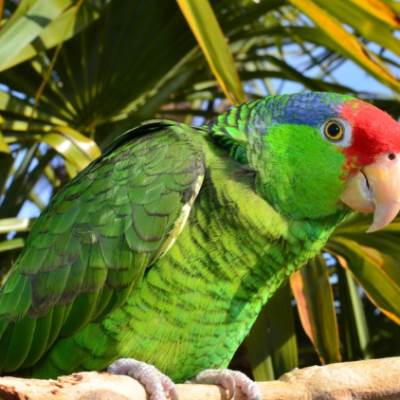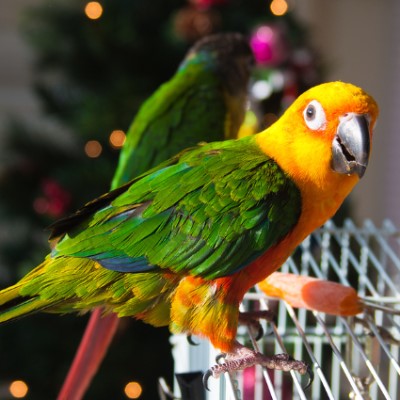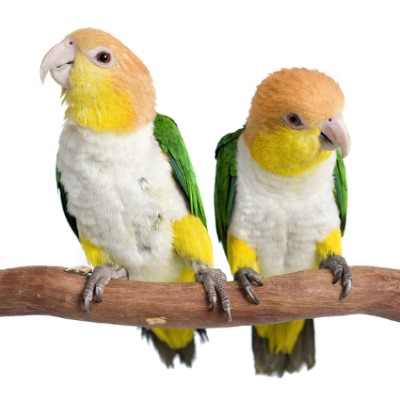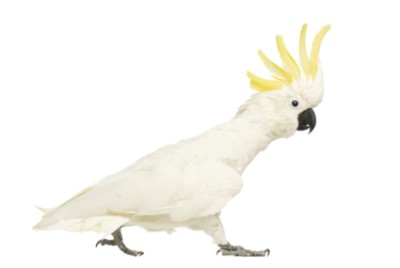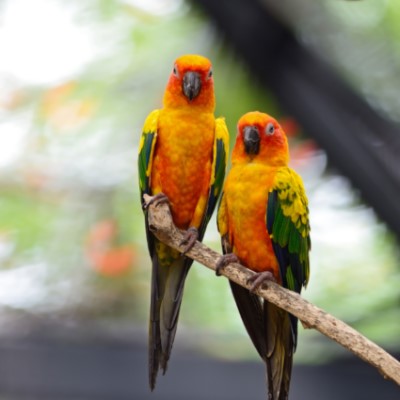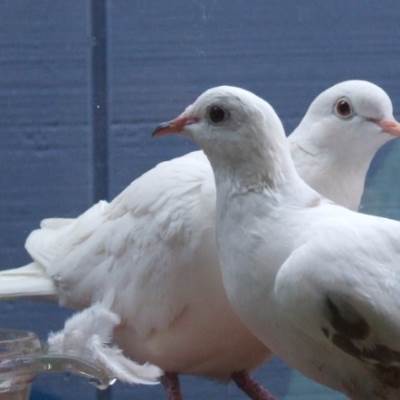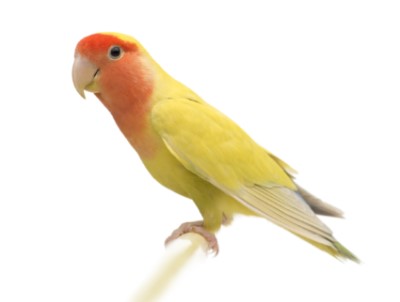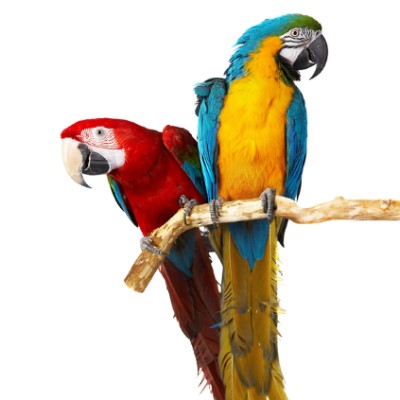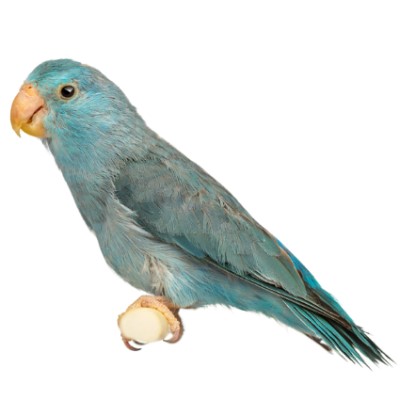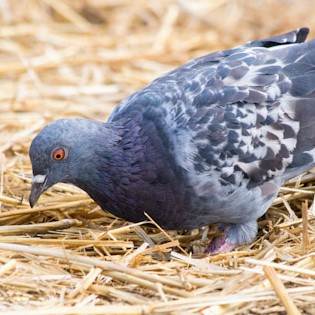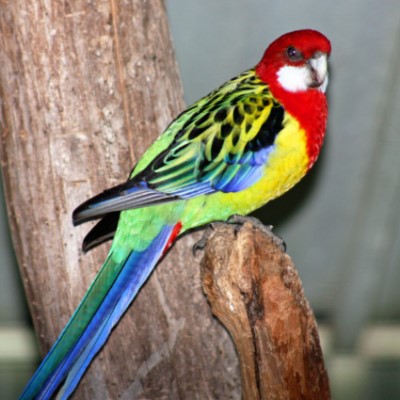The mynah birds are native to India and China but were exported years ago into other areas such as Australia, New Zealand, and Hawaii. The Java Hill Mynah (pictured) looks much like a crow with yellow and orange markings and a black exterior that can appear purple or blue under varied lights. There are three main species of mynahs:
Jungle Mynah
Hill Mynah
True Mynah
Jungle, Hill, and True Mynahs are rarely kept as pets. The Jungle and Hill Mynahs are kept by people who specialize in the species and breed them to maintain a healthy line of mynahs and to prevent them from eventual extinction.
Common Reasons for Surrender
The few mynahs that are available are usually surrendered because they bite.
Pros
The mynah is often described as the best talking bird, with an incredible ability to imitate words and tone of voice. A mynah that is handfed from birth will be more easily trained and socialized.
Cons
The mynah can be noisy with loud whistles and is messier than most due to the type of food they eat. Mynahs like to steal things, and their liquid feces smells badly.
Diet
The mynah needs all types of fruit which can be chopped into small pieces so it is easy for her to swallow. Mynahs need a mixture of food that is low in iron. These birds are not able to get rid of the iron in their bodies, and if they have too much iron it will kill them due to iron retention in the liver.
Perhaps you’ve heard the term, “That fills the bill.” It’s possible that this came from the needs of the mynah bird. A mynah will dip into water and sip it until the waters fills her bill. You will need to provide plenty of water for sipping.
Exercise
Most birds that are handfed and socialized since birth can be let out of their cages to fly around in the room. However, they are not a hands-on bird and cannot be handled like a Parrot.
Possible Health Issues
Subject to iron retention disease and need a diet low in iron.
Housing
You can also buy special mynah bird cages, but they are not as easy to find now due to these birds not being available very often. Mynahs are hoppers and enjoy hopping probably more than flying. The mynah’s cage should be at least three to four feet long and two feet wide and provide perches and removable flooring (such as a paper bag) for hopping about on the floor.
Grooming
The only type of grooming they require is bathing facilities on a daily basis, which can be as simple as placing a shallow dish with water inside the cage. Be sure to change the water regularly as droppings will likely mingle in with the water throughout the day.
Training
Mynahs are more easily trained when they are handfed from birth and begin training at an early age. They will mimic what you say or what you whistle. If you whistle, the mynah may decide to whistle instead of talking. So, you need to choose your words or your whistle wisely.
Entertainment
The mynah will be most entertained and satisfied when he receives attention from his owner, whether from training or talking or interacting. If you purposefully make contact with your bird every day and talk to her, she will respond with well-socialized behavior.
We want to thank Stuart Mayer, breeder of Java Hill Mynahs for 60 years, England; the Exotic Bird Hospital in Jacksonville, Florida, Avian Rescue Corporation (ARC), Concord, California, and Feathered Friends Forever, Harlem, Georgia, for help with this profile.


